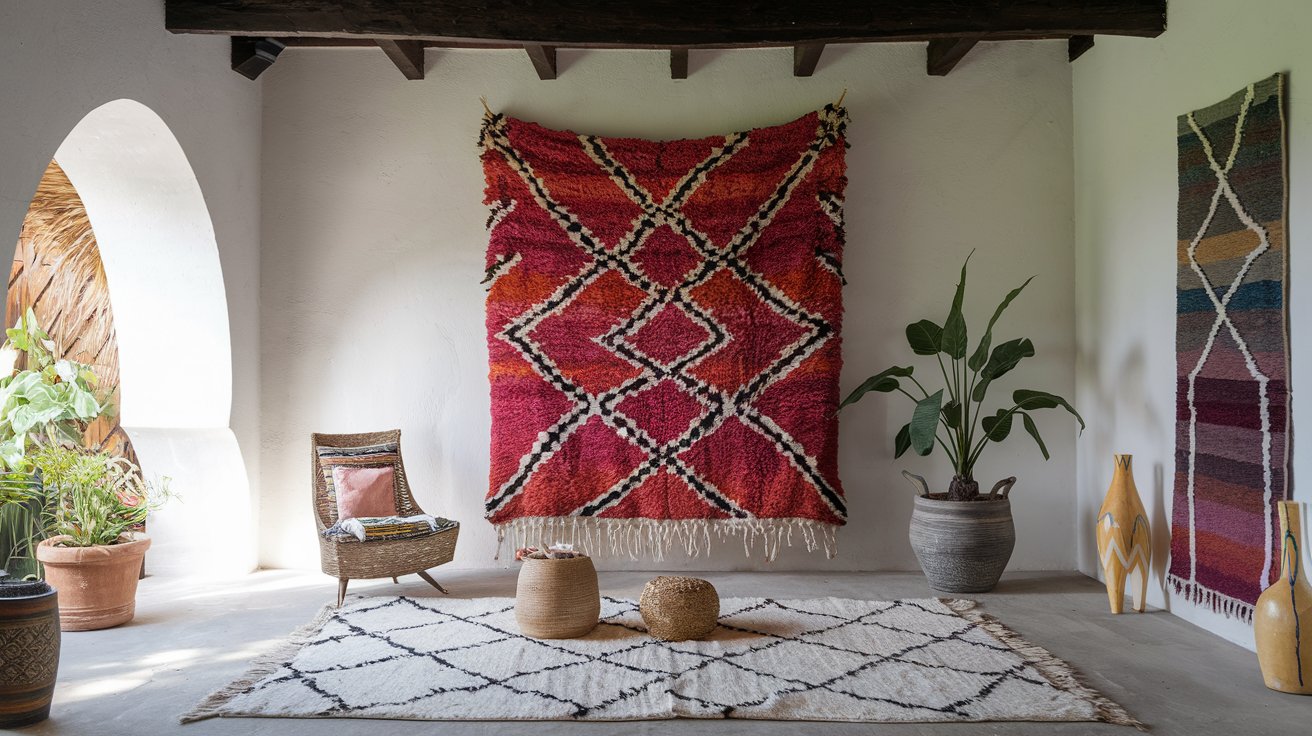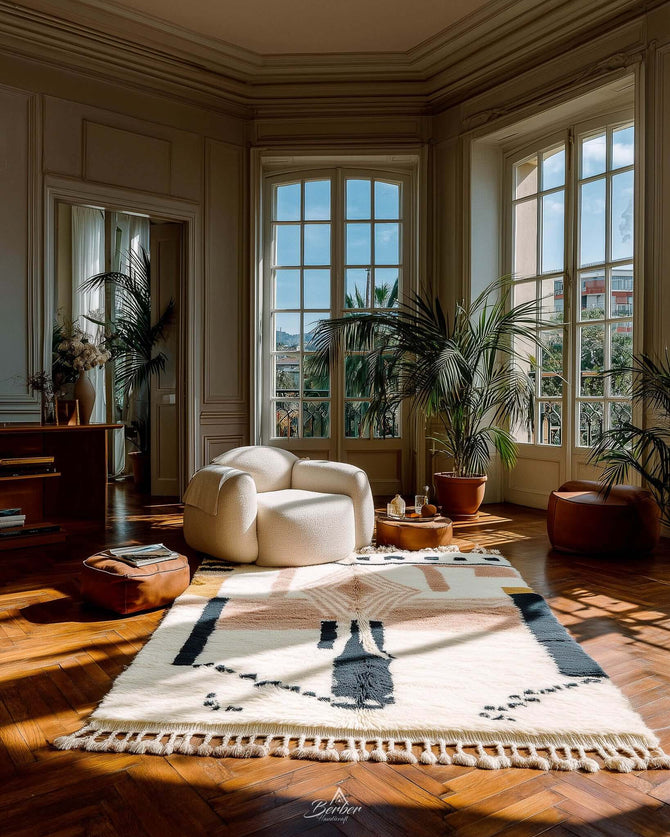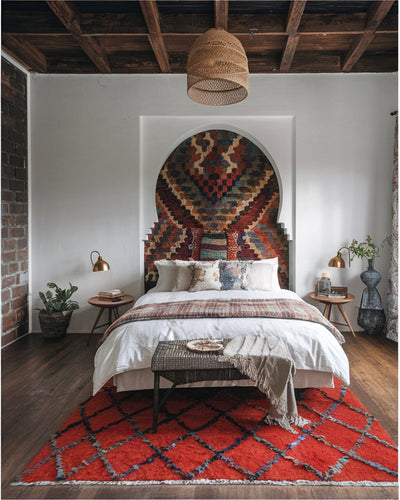Ever run your fingers across a Moroccan rug and wondered why some feel like clouds while others feel... well, just ordinary? Let's talk about the real secret behind those heavenly handmade rugs – it's all in the knots.
The Foundation of Quality Berber Rugs

Think of rug knots like the pixels in your TV screen – the more you have, the clearer and more beautiful the picture. At Berber Handicraft, our artisans pack in around 2 100 knots per square foot / 22 000 - 23 000 per square meter. That's like the difference between watching your favorite show in 4K versus the standard definition.
Why Knots Matter So Much

Here's what those extra knots mean for your rug:
- More density means better durability
- Higher knot count creates that plush feel underfoot
- Detailed patterns become possible
- The rug maintains its shape longer
- Better insulation for your floor
The Secret Most Sellers Won't Tell You
Not all knots are created equal. Mass-produced rugs often use what we call "speed knots" – quick, loose ties that look fine at first but loosen over time. Our artisans use traditional Berber knots, each one carefully tied and secured. It's like the difference between a granny knot and a sailor's knot – one falls apart under pressure, the other gets stronger.
The Human Touch

If you visit a weaver at work, you will see that they do not count the number of knots they tie. It’s not something they do, they feel it. It has taken them years to understand that each knot has to be made to a certain tension, how the wool should come off the shafts, and how the patterns have to be woven to last centuries. No machine can replicate this intuition.
Time Tells the Truth
Place two rugs side by side – one with our high knot count and one with basic knotting. At first, they might look similar. But fast forward six months:
- The basic rug starts showing wear paths
- Its pattern becomes distorted
- The pile flattens unevenly
Meanwhile, our Berber rugs:
- Maintain their plush texture
- Keep their patterns crisp
- Gets better with age
Why We Take Our Time
Could we make rugs faster? Sure. But we choose to maintain the traditional knotting techniques because:
- Each knot is tied at the perfect tension
- Patterns stay true for decades
- The rug develops character without losing structure
- Repairs are rarely needed
The Investment That Makes Sense

Yes, proper knotting takes time, which affects the price. But consider this: a well-knotted Moroccan rug lasts generations, while a loosely knotted one might need replacing in just a few years. It's simple math.
How to Check Quality for A Handmade Rug

Next time you're rug shopping, try this:
- Fold a corner and look at how dense the knots are
- Run your hand against the pile – it should feel firm yet soft
- Check the back – knots should be visible and even
- Press hard on the pile – it should spring back quickly
At Berber Handicraft, we welcome these checks. We encourage them. When you know what makes a quality Berber rug, you'll understand why ours are special.
Ready to experience the difference in quality yourself? Explore our handmade rug collection and find a piece that feels as good as it looks.




